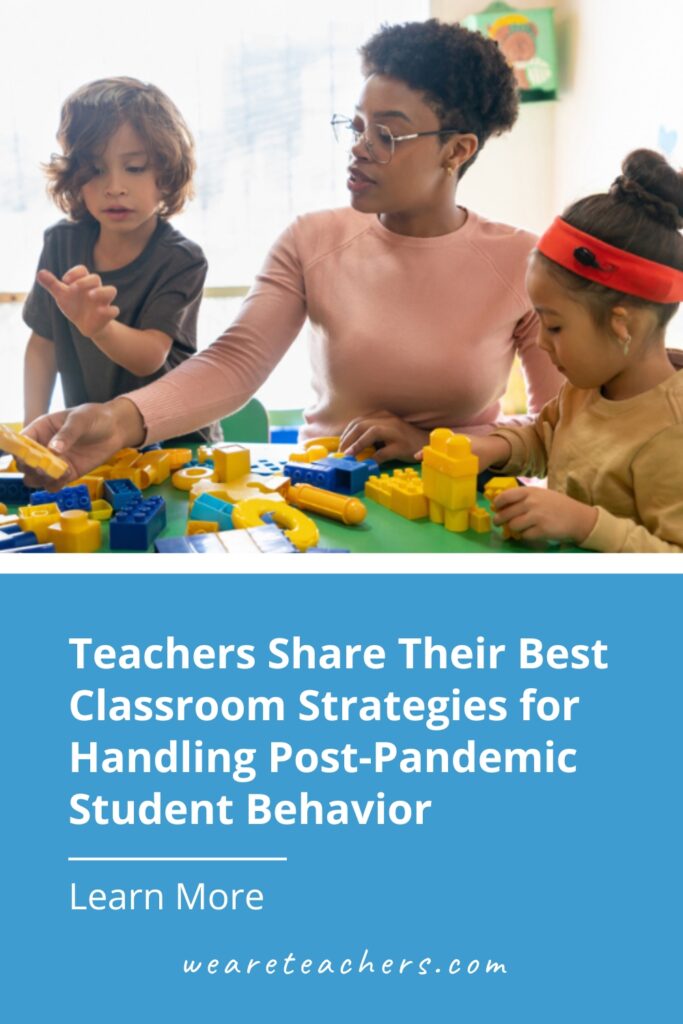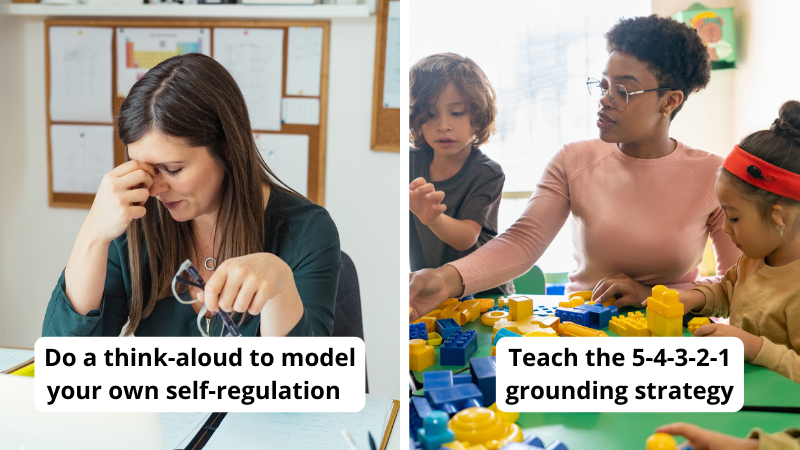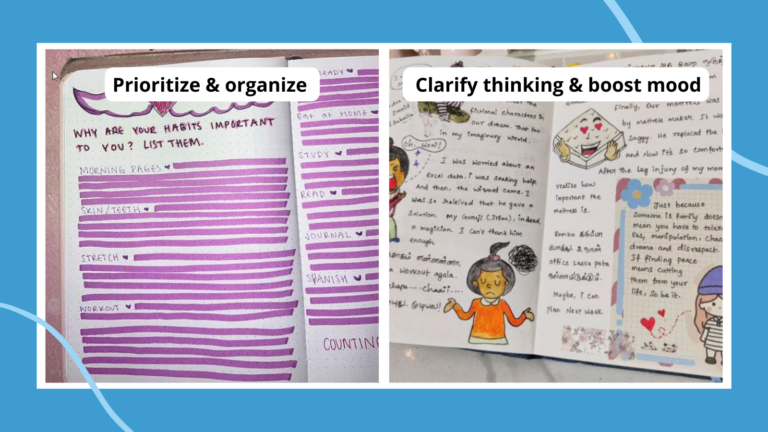It’s been two years since most students returned to the classroom after COVID-19 shutdowns, and student behavior is a major concern for teachers. If you’re feeling the stress of managing behavior day in and day out and feeling like it’s just not back to “normal,” you’re not alone.
Education company EAB reported this in February 2023:
84% of teachers said students were behind in self-regulation and relationship building compared to pre-pandemic.
According to the National Center for Educational Statistics, in July 2022:
87% of schools reported that the pandemic has negatively impacted students’ social-emotional development.
84% of public schools agreed that students’ behavior has been negatively impacted by the pandemic.
Teachers reported an increase in rowdiness and disruptive and physically aggressive behaviors.
Classroom incidents of physical violence have nearly doubled since 2020.
The statistics (you can read more at Chalkbeat) may bring some sense of relief in knowing you’re not alone. But then you look out at your students and think, now what do I do?
Here’s how teachers in our WeAreTeachers community are dealing with student behavior in a post-COVID classroom.
Regulation Role-Play
In the last few years, kids just haven’t had enough practice with self-regulation and figuring out how to manage small versus big problems. Taking time to act out common scenarios during class time can help some students get that practice in.
“To learn how to regulate their behavior, kids need both the language to describe how they’re feeling (angry vs. annoyed, sad vs. jealous, etc.) and opportunities to do so. Have students practice describing how they’re feeling when they’re calm—role-playing different scenarios can be fun!—so it’s easier to do when they’re actually in crisis mode.”
—Karey G.
Give Students Space
The teachers we talked to recommended finding space for kids to work through their feelings, and waiting until they are calm to talk to them.
“Holding in feelings isn’t healthy, so I let them express them in a safe area away from other students. Then, when they’re calm, we talk about it and try again.”
—Kimberly S.
“Compared to before COVID, one thing that I do differently now is giving students who have frequent outbursts time and space when they are in those moments. I talk to them when they’re calm. I don’t engage in the power struggle.”
—Maggie W.
Look for Warning Signs
“At this point in the year, you can probably see some behaviors coming from a mile away. A big focus this year has been looking for precursor behaviors that signal that a child is in distress or struggling, and not waiting for the big blowup or the more dangerous challenging behaviors. We are looking for signals and providing support early.”
—Kate M.
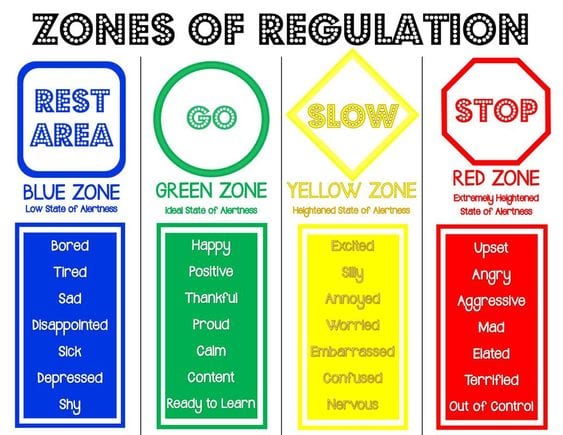
When you see a meltdown brewing, give the student a visual. This could be a graphic of the zones of regulation or an image of different faces (happy to angry). Ask them to point to where they are, and then direct them to a calming corner or activity to help them calm down. You’re helping the child have some agency in how they engage and tell you “I’m not OK” while their thinking brain is shut down for a moment.
Calming Exercises
“Yesterday I taught one student, a 7th grader, a grounding strategy … 5 things you see, 4 hear, 3 touch, 2 smell, 1 taste. I wasn’t sure if he was calm enough to hear my words, but he came back into class, was calm, and later told me that it really helped.”
—WeAreTeachers teacher/anonymous commenter
Check out more calming exercises and breath-work strategies (with free downloads!) here.
Build in Brain Breaks
You’re likely already doing brain breaks, but double down. Brain breaks, like games, help ensure that students are getting what they need: physical activity and fun. Here’s a tip for building self-control skills in a fun way:
“Play games that involve stopping and starting, like freeze dance or red light/green light.”
—Nadia S.
Get more ideas: 54 Educational Brain Breaks Students Will Love
Create a Calming Corner
“I have a calm-down space in the classroom and teach students how to use it, just like I’d teach them to use any other tool. It’s not too late in the year to introduce a calm-down corner. Model how to use it by thinking aloud when you’re stressed.”
—Kate M.
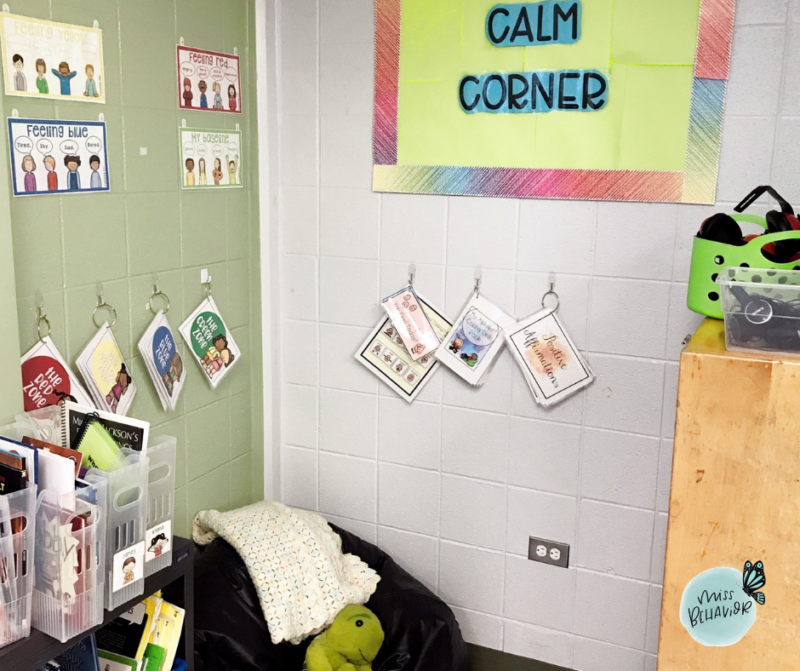
Image: Miss Behavior
Gamify Self-Regulation
“Behaviors aren’t going to disappear next year, so teach students how to self-regulate or what to do when they’re frustrated when they are calm. Then, remind them of what to do when you see their frustration starting.”
—Nadia S.
One idea for reinforcing self-regulation strategies is to create a game board for students to choose one way to calm down when they’re starting to get upset. The game board can have spaces for:
- Mental break (coloring, reading)
- Physical (walk, stretch)
- Spiritual (yoga, sitting in a calming corner)
- Sensory (sound, movement)
- Grounding (deep breathing, slow counting)
- Positive self-talk (affirmations)
- Social (talk with a teacher or peer)
- And any other strategies you’ve taught this year
Think-Aloud
Think about self-regulation like any other think-aloud you’d do.
“Model how you’re feeling and how you’re using tools to help yourself feel better. For example, you could say, ‘This room is really loud and I’m feeling frustrated, so I’m going to take five deep breaths.’ ‘Now I’m feeling calmer, and my shoulders feel less tense.’”
—Kate M.
Don’t Forget About Yourself
At this point it feels cliché, but it’s worth mentioning: Put on your oxygen mask first. Your patience is limited, so fill your own bucket regularly.
“Making time for yourself is a big one that’s so hard for us to do. Finding time to schedule joyful activities, whether that is a walk, a massage, a solo trip to Target. Whatever it may be.”
—Nadia S.
How are you managing the world of post-COVID behaviors? Share with other teachers on the WeAreTeachers HELPLINE group on Facebook.
For more articles with practical advice from actual teachers, subscribe to our newsletters.
